Group2
Member list
Japanese members
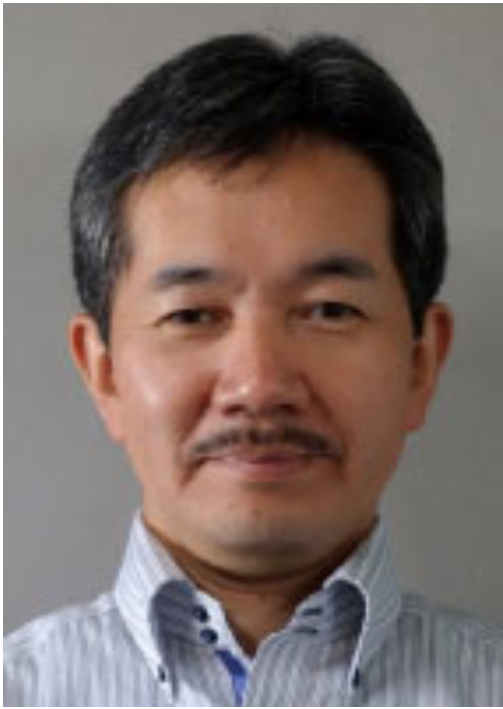
Dr. Kenji Doi
Group Leader
Osaka University
Professor
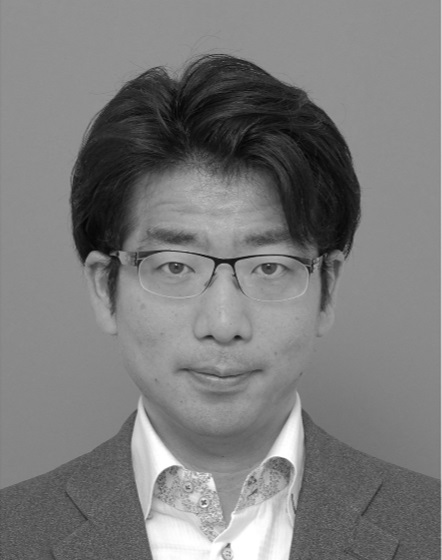
Dr. Kazuki Nakamura
Meijo University
Associate Professor

Dr. Hiroto Inoi
University of Toyama
Associate Professor
Dr. Hiroyoshi Morita
Nippon Engineering Consultants Co., Ltd
Dr. Tsuyoshi Takano
Nippon Engineering Consultants Co., Ltd
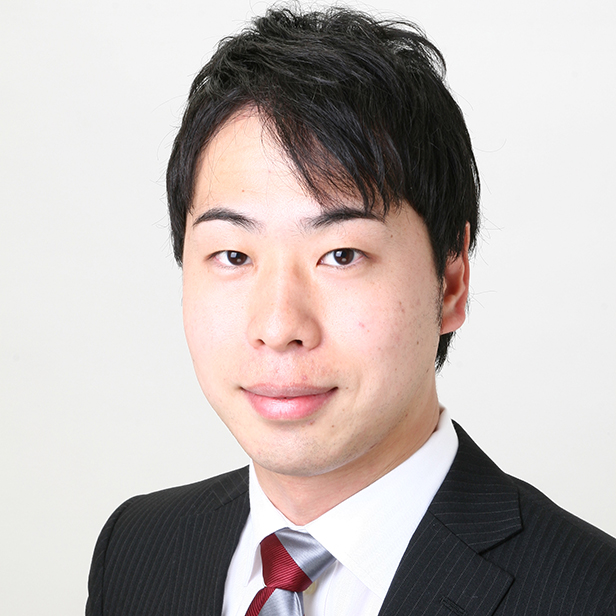
Dr. Masato Miyata
Mitsubishi UFJ Research and Consulting Co.,Ltd.
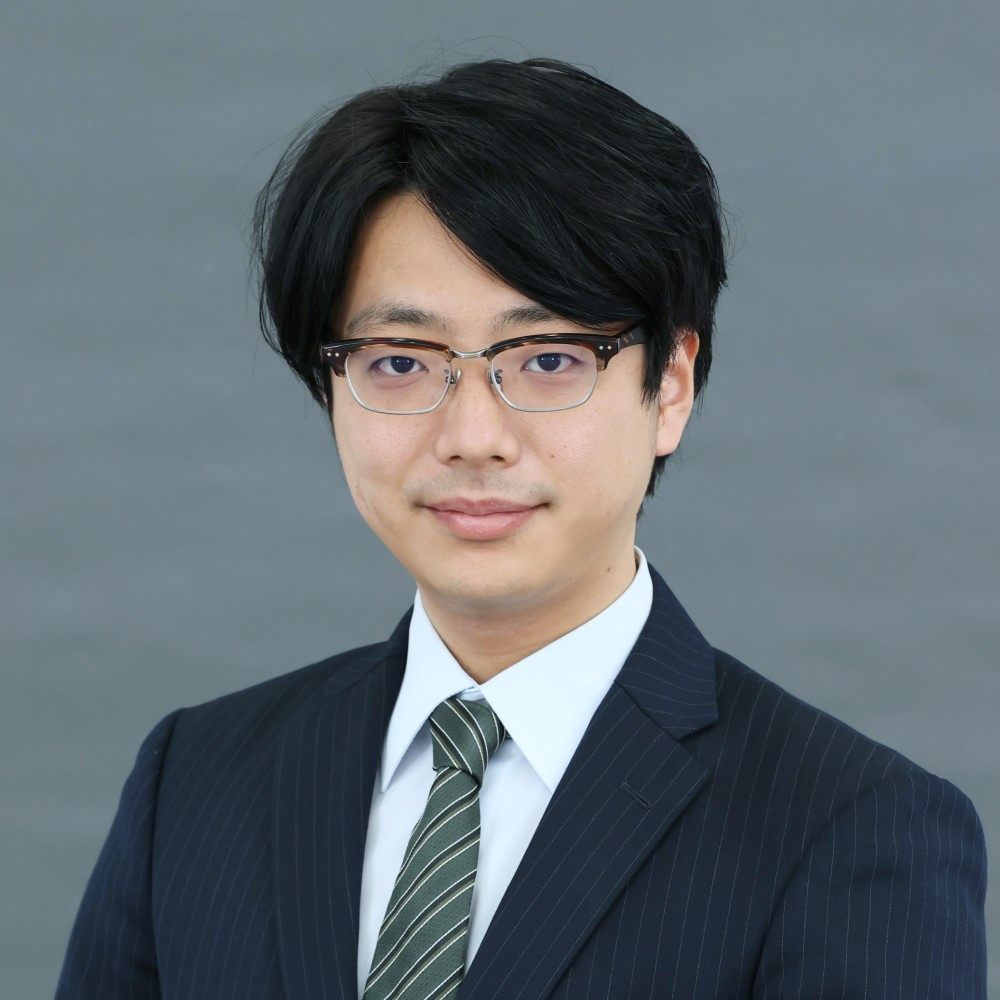
Dr. Atsushi Yasuda
Mitsubishi UFJ Research and Consulting Co.,Ltd.
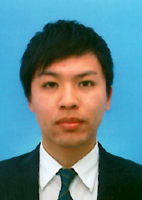
Dr. Kento Yoh
Osaka University
Assistant Professor
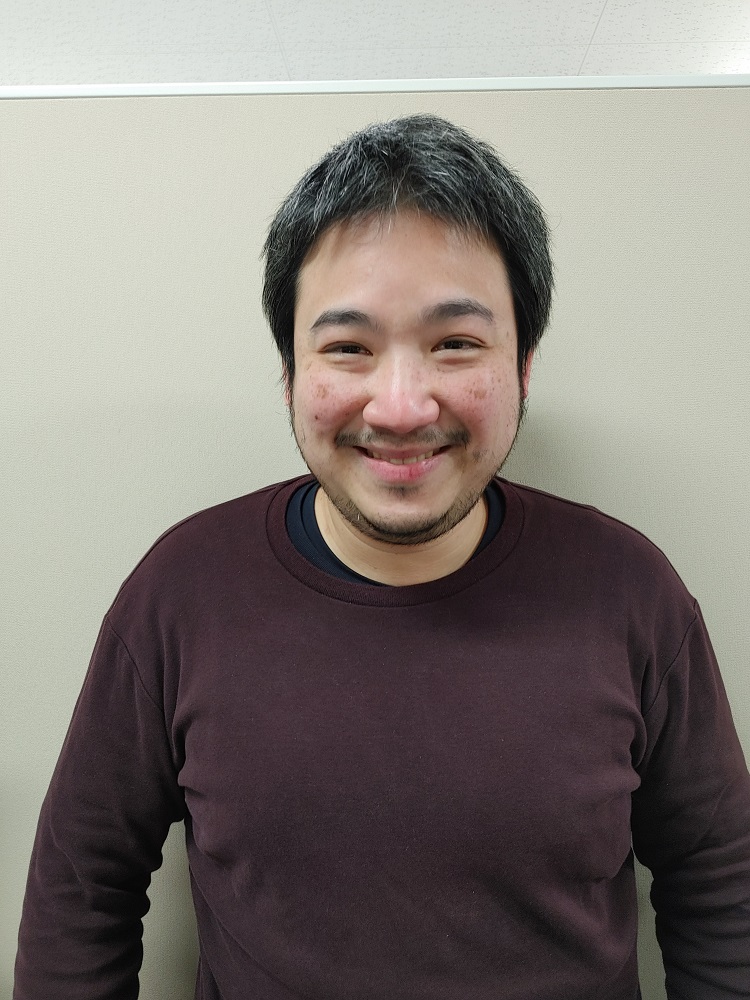
Mr. Khaimook Sippakorn
Osaka University
Doctor course student
Thai members

Dr. Alisa Kongthon
Group leader
NECTEC

Dr. Wasan Pattara-atikon
NECTEC

Dr. Sitapa Rujikietgumjorn
NECTEC

Dr. Teesid Leelasawassuk
NECTE
Abstract
This project proposes a terminal mobility system for Sukhumvit Road and a district design to realize a seamless connection between the surrounding streets (Soi) and public transportation stations. Specifically, we will develop and demonstrate a car-delivery service using small electric mobility vehicles as terminal mobility suitable for the size of Soi, and verify the effects of reducing traffic congestion by downsizing and sharing traffic within Soi. In addition, we will demonstrate the facilitation of transit connections by installing stations at public transportation stations and commercial facilities adjacent to the ticket gates. Based on the above verification, we will attempt to propose an improved design of the street/road structure and inter-street communication functions to ensure the smooth operation of the Smart Small Vehicle Service (SSVS) in the city. In addition, we will propose a system to deploy inexpensive image sensors at signalized intersections and use image recognition to understand the intersection traffic flow of vehicles, pedestrians, etc., and use the results to promote the upgrading of signal control. Based on the results, we will propose a system to promote the sophistication of traffic signal control. Based on the streamlined traffic flow, we will propose and evaluate physical changes to the road structure at intersections and single-street sections to change the automobile-oriented road design to a “street for all” design where various mobilities such as people and bicycles can coexist. We will propose a “Street for all” design in which various mobilities such as people and bicycles can coexist.
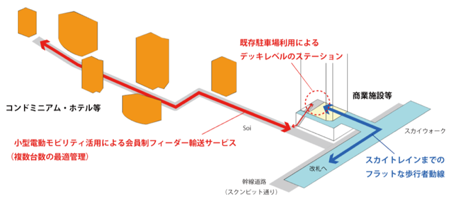
Social experiment of SSVS transit service
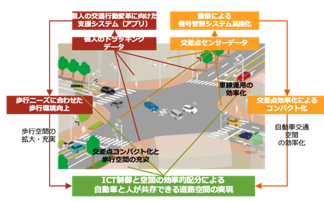
Street for all at an intersection
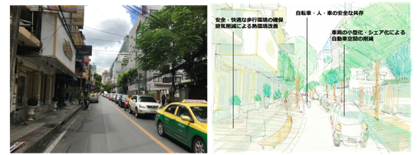
Street for all at a soi
Research Contents
1.Analysis of policies and current status on land use and transportation in Bangkok
This section analyzes land use and transportation policies and their current status in Bangkok Metropolitan Region. In particular, we will focus on Soi, a cul-de-sac within the residential area that is characteristic of the Bangkok metropolitan area. We will analyze the land use and traffic situation in Soi, which is connected to Sukhumvit Road, where the social experiment will be conducted, as well as the traffic congestion caused by the inflow of vehicles such as cabs. ), which is a means of transportation that occupies less road space compared to the number of people traveling than taxis and car-dispatch services. We will also assess the traffic congestion on Sukhumvit Road.
2.Social experiment of next generation district transportation service using small electric mobility
We will confirm the feasibility of the SSVS through a demonstration experiment. In cooperation with a local serviced apartment operator, we will experimentally conduct an SSVS on-demand pick-up and drop-off service for residents of serviced apartments to BTS stations. We will also verify the business potential of the service.
3.Development of traffic and vehicle management applications that take into account individual attributes and district characteristics
In addition to the SSVS call and dispatch application in the social experiment, we will develop an application that presents travel alternatives based on various values such as time and cost reduction, health improvement, accident risk reduction and congestion avoidance, and a MaaS application that integrates these. We will also develop a user interface that is suited to the temperament of Thai people.
4.Development of Walkability and Usability Evaluation and Design System
In order to evaluate the quality of movement in spaces around stations, we will organize the Walkability evaluation index, which evaluates walking spaces with perceptual indexes consistent with QOL indexes, and the design elements of streets, and evaluate internationally diverse street spaces using VR tools. In the social experiment, we will evaluate the quality of travel related to the last mile travel at Soi around home and the transfer from getting off at SSVS to getting on at BTS, and propose a street design to improve the quality of travel.
5.Development of traffic flow management system using big data
In Bangkok, various traffic modes, including many motorcycles, are mixed in the road space, and driver behavior, lane operation, and road structure are very different from those in Japan and other developed countries. Using field surveys, video surveys, and probe data, we will develop a microsimulation model that reflects the actual situation in Bangkok. We will also develop a system that can more accurately predict traffic congestion in the short-term future, such as 30 minutes to an hour, which is necessary for MaaS applications that include more advanced traffic mode selection and route selection.
6.Development of street for all guidelines
We will develop guidelines for both cyber and physical measures to improve arterial roads, intersection roads, and city streets in major Asian cities, which tend to be automobile-oriented, into streets for all that respect various modes of transportation.